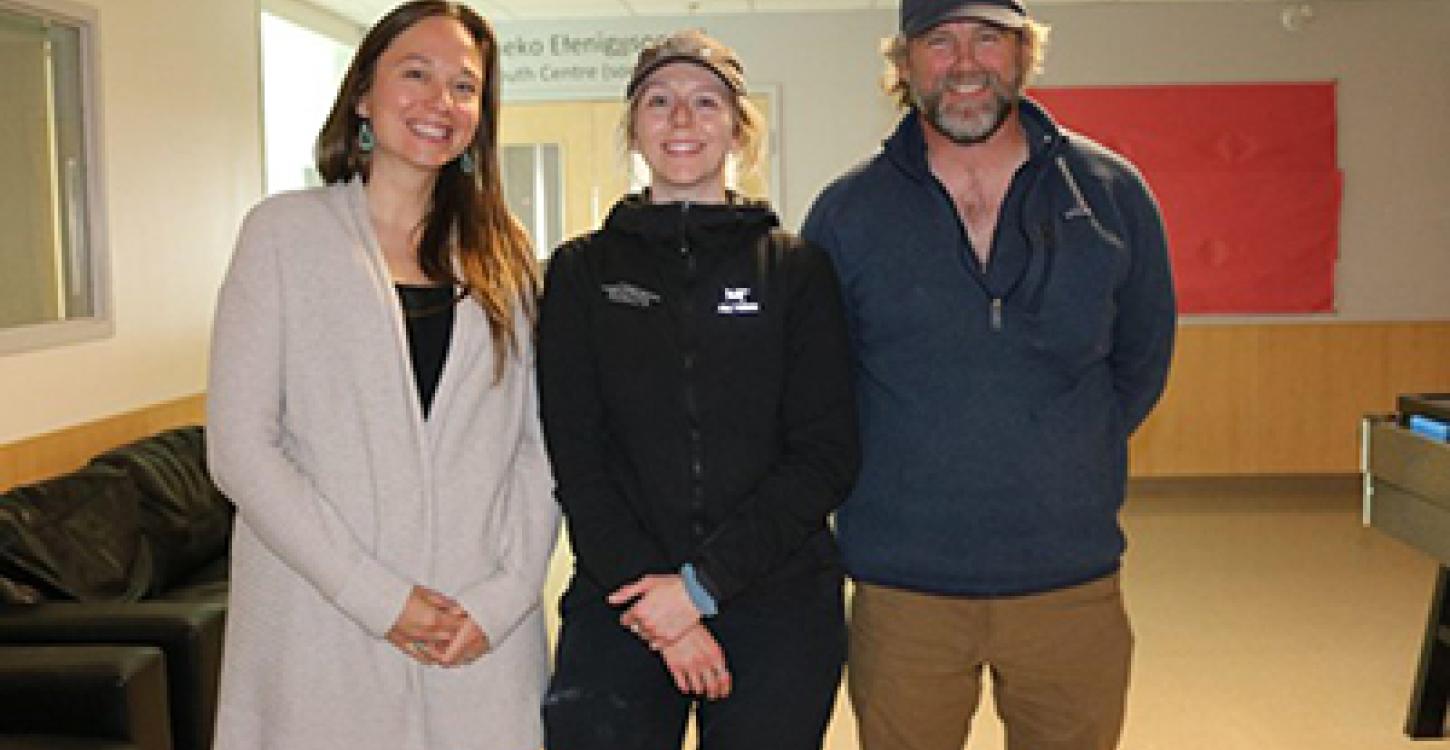
Rhiannon Pankratz, Christina Howell, and Eric Reed gave updates to the WRRB on migratory birds during the Board meeting in Behchokǫ̀, May 24-25. Simon Whitehouse/WRRB photo
Board updated on migratory birds
June 19, 2023
The Wek'èezhìı Renewable Resources Board (WRRB) passed motions to support ongoing efforts to help two breeds of migratory birds that are declining in population during its board meeting in May.
The Board heard first from Rhiannon Pankratz, Northern Liaison Biologist with Environment Climate Change Canada on her department’s work developing a Recovery Strategy for yat’ǫhda (barn swallow). A Recovery Strategy is a government planning document that identifies what actions need to take place to reverse the decline of a species.
The Board also heard from University of Saskatchewan-researcher Christina Howell, with the support of Environment and Climate Change Canada biologist Eric Reed, on work being done in the Northwest Territories and Saskatchewan to learn more about nohtà (Horned Grebe), including where they winter and the extent to which they are exposed to contaminants and environmental pollution.

Photo by Gordon Court
Yat’ǫhda (Barn Swallow) mainly nest in and around structures like buildings and bridges, are very widespread across Canada and North America, and forage and feed on insects. Pankratz explained that yat’ǫhda was assessed as ‘special concern’ status in 2021 meaning that the bird may become threatened or endangered if threats and population trends continue.
A management plan is being developed and will be available for public review in the fall.
Horned Grebe
Howell discussed her interest in nohtà and the need to learn more about where it winters and what chemicals it is exposed to so that proper conservation strategies can be created.
“We cannot possibly develop effective conservation strategies if we don’t know where these birds are going or what threats they may be exposed to,” she explained.
The horned grebe has been declining in population since the seventies, and in 2009 received a ‘special concern’ assessment meaning that it may become threatened or an endangered if threats and population trends continue.

Because the bird has a large majority of its breeding range in Canada - particularly the Prairie provinces - and because it is considered understudied, she said it is important that some attention be put toward understanding its behaviour.
To collect data, Howell has been involved in a research project since, which has involved working in Sǫǫ̀mbak’è (Yellowknife) and Saskatoon where tracking devices are applied to the birds and samples are taken of the grebe’s feces, eggs, and blood.
Continued research is planned for one more field season this summer, which will continue some of the work started last year, with the exception of putting out more tracking devices. To learn more about the horned grebe, please visit our website.